“Buran” and “Shuttle”: such different twins
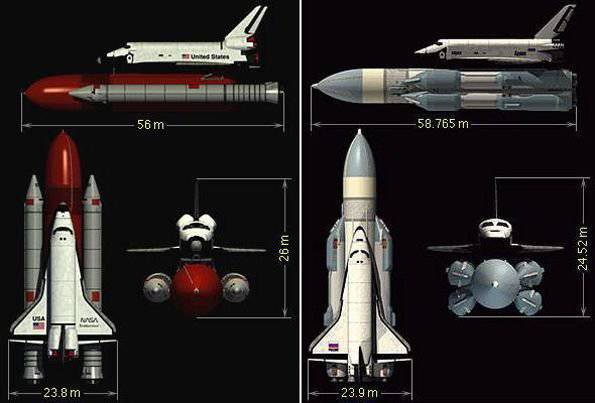
Shuttle and Buran
"Shuttle"
Shuttle - reusable transport spacecraft (MSTC). The ship has three liquid rocket engines (LRE), working on hydrogen. The oxidizing agent is liquid oxygen. A huge amount of fuel and an oxidizer is required to make an exit to Earth orbit. Therefore, the fuel tank is the largest element of the Space Shuttle system. The spacecraft is located on this huge tank and is connected to it by a piping system that supplies fuel and oxidizer to the Shuttle engines.
And still, three powerful engines of a winged ship are not enough to go into space. Two solid-fuel boosters are mounted to the central tank of the system - the most powerful missiles in stories humanity today. The greatest power is needed precisely at launch, in order to move a multi-ton ship and lift it to the first four and a half dozen kilometers. Solid rocket boosters take on 83% load.
At an altitude of 45 km, solid fuel boosters, having produced all the fuel, are separated from the ship and parachuted into the ocean. Further, to the height of 113 km, the "shuttle" rises with the help of three rocket engines. After separation of the tank, the ship flies another 90 seconds by inertia and then, for a short time, two orbital maneuvering engines operating on self-igniting fuel are turned on. And the "shuttle" goes into work orbit. A tank enters the atmosphere, where it burns. Parts of it fall into the ocean.
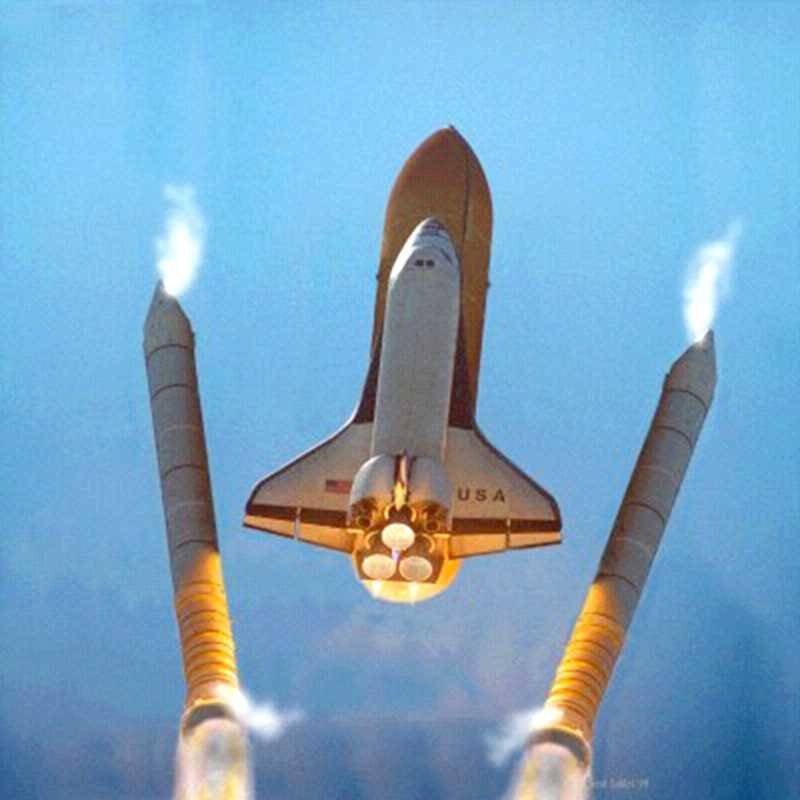
Department of solid fuel boosters
The orbital maneuvering engines are intended, as can be understood from their name, for various maneuvers in space: to change the parameters of the orbit, to moor to the ISS or to other spacecraft in near-earth orbit. So the "shuttles" visited the Hubble telescope several times for service.
And finally, these engines are used to create a braking impulse when returning to Earth.
The orbital stage is made according to the aerodynamic scheme of a tailless monoplane with a low-lying delta wing with a double sweep of the leading edge and with vertical tail of the usual scheme. For control in the atmosphere, a two-section rudder on the keel (here air brake), elevons on the rear edge of the wing and a balancing shield under the rear fuselage are used. Chassis retractable, tricycle, with a nose wheel.
Length 37,24 m, wingspan 23,79 m, height 17,27 m. “Dry” weight of the device is about 68 t, take-off - from 85 to 114 t (depending on the task and payload), landing with return cargo on board - 84,26 t.
The most important feature of the airframe is its thermal protection.
In the most heat-stressed places (design temperature up to 1430º С) a multi-layered carbon-carbon composite is used. There are few such places, it is basically the sock of the fuselage and the leading edge of the wing. The bottom surface of the whole apparatus (heating from 650 to 1260º С) is covered with tiles from a material based on quartz fiber. Top and side surfaces are partially protected by low-temperature insulation tiles - where the temperature is 315 – 650º; in other places where the temperature does not exceed 370º С, the felt material covered with silicone rubber is used.
The total weight of all four types of thermal protection is 7164 kg.
The orbital stage has a double deck cabin for seven astronauts.
In the case of an extended flight program or when performing rescue operations, there may be up to ten people on board the shuttle. In the cockpit - flight controls, work and sleeping places, kitchen, pantry, sanitary compartment, airlock, operation and payload control posts, other equipment. Total enclosed cab volume - 75 cube. m, the life support system supports the pressure in it 760 mmHg. Art. and temperature in the range 18,3 - 26,6º C.
This system is made in the open version, that is, without the use of air and water regeneration. This choice is due to the fact that the duration of the shuttle flights was set at seven days, with the possibility of bringing it to 30 days using additional funds. With such insignificant autonomy, the installation of the regeneration equipment would mean an unjustified increase in weight, power consumption and complexity of the onboard equipment.
The reserve of compressed gases is enough to restore the normal atmosphere in the cabin in the case of one complete depressurization or to maintain the pressure in it 42,5 mm Hg. Art. for 165 minutes when a small hole is formed in the body shortly after the start.
Cargo compartment dimensions 18,3 x 4,6 m and the volume 339,8 cube. m is equipped with a "three-knee" manipulator with a length of 15,3 m. When you open the casement doors, the cooling system radiators are rotated with them. The reflectivity of radiator panels is such that they remain cold even when the sun shines on them.
What can the space shuttle and how does it fly
If we imagine a system assembled, flying horizontally, we will see an external fuel tank as its central element; an orbiter is docked on top of it, and accelerators on the sides. The total length of the system is equal to 56,1 m, and the height is 23,34 m. Overall width is determined by the wingspan of the orbital stage, that is, it is 23,79 m. The maximum starting weight is about 2 041 000 kg.
It is impossible to say so unequivocally about the size of the payload, since it depends on the parameters of the target orbit and on the starting point of the ship. We give three options. The Space Shuttle system is able to output:
- 29 500 kg when launching east from Cape Canaveral (Florida, east coast) into orbit 185 km altitude and 28º inclination;
- 11 300 kg at launch from the Center for Space Flight. Kennedy into orbit altitude 500 km and inclination 55º;
- 14 500 kg when launched from the Vandenberg Air Force Base (California, west coast) into a polar orbit with an altitude of 185 km.
For the shuttles were equipped with two runways. If the shuttle landed away from the cosmodrome, he returned home astride Boeing 747
A total of five shuttles were built (two of them died in accidents) and one prototype.
During development, it was envisaged that the shuttles will make 24 start per year, and each of them will make flights to space before 100. In practice, they were used significantly less - by the closing of the program in the summer of 2011, 135 launches were made, of which Discovery - 39, Atlantis - 33, Columbia - 28, Challenger - 25, Challenger - 10 .
The crew of the shuttle consists of two astronauts - the commander and the pilot. The largest crew of the shuttle is eight astronauts (Challenger, 1985 year).
Soviet reaction to the creation of the "Shuttle"
The development of the shuttle made a great impression on the leaders of the USSR. It was believed that the Americans are developing an orbital bomber armed with space-to-earth missiles. The sheer size of the shuttle and its ability to return cargo to Earth up to 14,5 tons were interpreted as a clear threat to the abduction of Soviet satellites and even Soviet military space stations such as Almaz, which flew in space under the name Salyut. These estimates were erroneous, since the United States in 1962 abandoned the idea of a space bomber in connection with the successful development of the atomic submarine fleet and ground-based ballistic missiles.
Soviet experts could not understand why we need 60 launches of “shuttles” per year - one launch per week! Where were the many space satellites and stations for which the Shuttle would be needed to come from? The Soviet people living under a different economic system could not even imagine that the leadership of NASA, which was pushing hard at the new space program in the government and the congress, was guiding the fear of being left without work. The lunar program was nearing completion and thousands of highly qualified specialists were out of work. And, most importantly, before the respected and very well-paid managers of NASA there was a disappointing prospect of parting with habitable cabinets.
Therefore, an economic rationale was prepared for the large financial benefit of reusable transport spacecraft in the event of the abandonment of disposable missiles. But for the Soviet people, it was absolutely incomprehensible that the president and the congress could spend national funds only with great regard for the opinions of their voters. In this connection, the opinion prevails in the USSR that the Americans are creating a new spacecraft for some kind of future incomprehensible tasks, most likely military ones.
Reusable spaceship "Buran"
In the Soviet Union it was originally planned to create an improved copy of the Shuttle - OS-120 orbital plane, weighing 120 tons. (The American shuttle weighed 110 tons at full load). Unlike the Shuttle, it was supposed to provide the Buran with an ejection cabin for two pilots and turbojet engines for landing at the airfield.
The leadership of the USSR armed forces insisted on the almost complete copying of the “shuttle”. Soviet intelligence was able to get a lot of information on the American spacecraft by this time. But it turned out not so simple. Domestic hydrogen-oxygen fuel rocket engines turned out to be larger and heavier than the American ones. In addition, they were inferior in power overseas. Therefore, instead of three LREs, it was necessary to install four. But on the orbital plane there was simply no place for the four cruise engines.
At the "shuttle" 83% load at the start carried two solid fuel accelerator. In the Soviet Union, such powerful solid-propellant rockets could not be developed. Missiles of this type were used as ballistic carriers of nuclear charges of sea and land-based. But they did not reach the required power very, very much. Therefore, the Soviet designers had the only opportunity - to use liquid rockets as accelerators. The program "Energy-Buran" created very successful kerosene-oxygen RD-170, which served as an alternative to solid-fuel boosters.
The location of the Baikonur cosmodrome forced the designers to increase the power of their launch vehicles. It is known that the closer the launch pad to the equator, the greater the load the same rocket can put into orbit. At the American spaceport at Cape Canaveral, the advantage over Baikonur is 15%! That is, if a rocket launched from Baikonur can lift 100 tons, then it will launch 115 tons into orbit when launching from Cape Canaveral!
Geographical conditions, differences in technology, the characteristics of the engines created and a different design approach - had an impact on the appearance of "Buran". Based on all these realities, a new concept was developed and a new OK-92 orbital spacecraft, weighing tons of 92, was developed. Four oxygen-hydrogen engines were transferred to the central fuel tank and the second stage of the Energia launch vehicle was obtained. Instead of two solid-fuel boosters, it was decided to use four liquid-fuel kerosene-oxygen missiles with four-chamber RD-170 engines. Four-chamber - this means with four nozzles. A large-diameter nozzle is extremely difficult to manufacture. Therefore, the designers go to the complication and weighting of the engine by designing it with several smaller nozzles. How many nozzles, so many combustion chambers with a bunch of pipelines supplying fuel and oxidizer, and with all the "whips." This bundle is made according to the traditional, "Royal", scheme similar to the "unions" and "vostokam", became the first step of the "Energy".
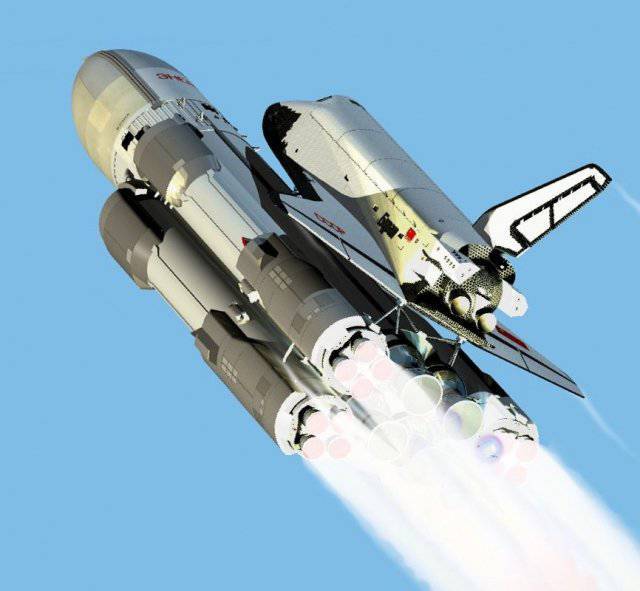
"Buran" in flight
The winged ship "Buran" itself became the third stage of the launch vehicle, like the Soyuz. The only difference is that the "Buran" was located on the side of the second stage, and the "Unions" at the very top of the launch vehicle. Thus, the classical scheme of a three-stage disposable space system was obtained, with the only difference that the orbital spacecraft was reusable.
Reusability was another problem of the Energy-Buran system. The Americans, “shuttles” were designed for 100 flights. For example, orbital maneuvering engines could withstand up to 1000 inclusions. All the elements (except the fuel tank) after the prophylaxis were suitable for launching into space.
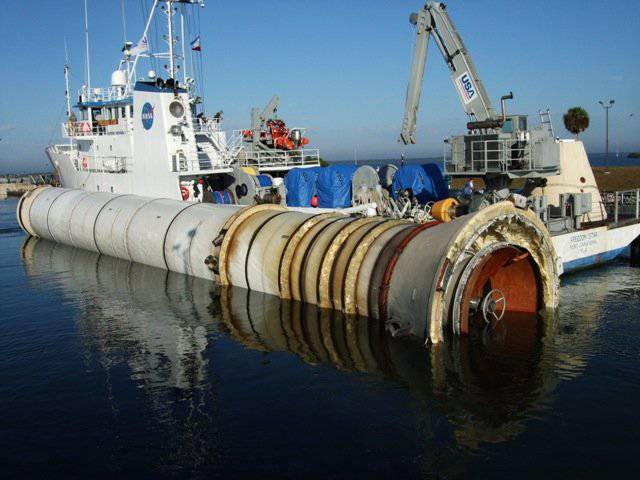
Solid accelerator picked up by a special vessel
Solid fuel boosters descended by parachute into the ocean, selected by NASA special ships and delivered to the manufacturer where they were prevented and filled with fuel. The Shuttle itself was also thoroughly tested, prevented and repaired.
Ustinov, the Minister of Defense, ultimatum demanded that the Energy-Buran system be as reusable as possible. Therefore, the designers were forced to deal with this problem. Formally, side accelerators were considered reusable, suitable for ten starts. But in fact, this was not the case for many reasons. Take at least the fact that American boosters splashed into the ocean, and the Soviet fell in the Kazakh steppes, where the landing conditions were not as benign as warm ocean waters. Yes, and a liquid rocket, creating a more gentle. than solid. "Buran" was also designed for 10 flights.
In general, the reusable system did not work, although the achievements were obvious. The Soviet orbital spacecraft, freed from large main engines, received more powerful engines for maneuvering in orbit. That, in the case of its use as a space "fighter-bomber", gave him great advantages. And plus turbojets for flight and landing in the atmosphere. In addition, a powerful rocket was created with the first stage on kerosene fuel, and the second on hydrogen. It was just such a rocket that the USSR lacked to win the moon race. In terms of its characteristics, Energia was almost equivalent to the American Saturn-5 rocket, which sent the Apollo-11 to the Moon.
“Buren” has a large foreign presence with Shattle. Korabl poctroen Po cheme camoleta tipa "bechvoctka» c treugolnym krylom peremennoy ctrelovidnocti, imeet aerodinamicheckie organy upravleniya, rabotayuschie at pocadke pocle vozvrascheniya in plotnye cloi atmocfery - wheel napravleniya and elevony. He was able to control the trigger in a timer with a side maneuver to 2000 kilometer.
The length of the "Bourana" - 36,4 meter, wing span - about 24 meter, the height of the ship on the landing gear - more 16 meters. The standard ship mass - more than 100 tons, of which 14 tons - comes on fuel. In the harbor of Volume of cabins - more than 70 cubic meters.
When vozvraschenii in plotnye cloi atmocfery naibolee teplonapryazhennye uchactki poverhnocti korablya rackalyayutcya do 1600 graducov, teplo zhe, dohodyaschee nepocredctvenno do metallicheckoy konctruktsii korablya, ne dolzhno prevyshat 150 graducov. For this reason, “Buren” is distinguished by a powerful heat and cure for the skin and for the formation of the normal temperature and the temperature at the time of the break in the life of the vessel during the rest.
Heat shield from xnumx Ceramic bronze has the capacity to accumulate heat, not passing it to the ship's hull. The total mass of this armor is a unit of 38 tonn.
The length of the cargo compartment "Buren" - a number of 18 meters. In its extensive cargo space, the body weight can be loaded with a weight of up to 30 tons. It was possible to dispatch large-sized space vehicles - large satellites, orbital stations. Target ship weight - 82 tones.
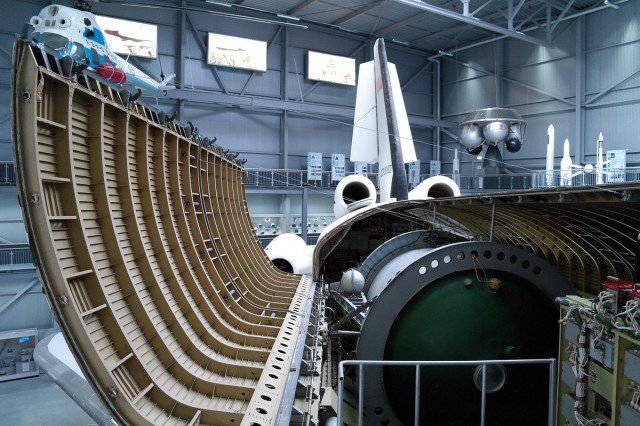
“Buren” equipped all over the world with unimproved systems and equipment as for the automatic, so and for the pilot. This is the best and most beautiful
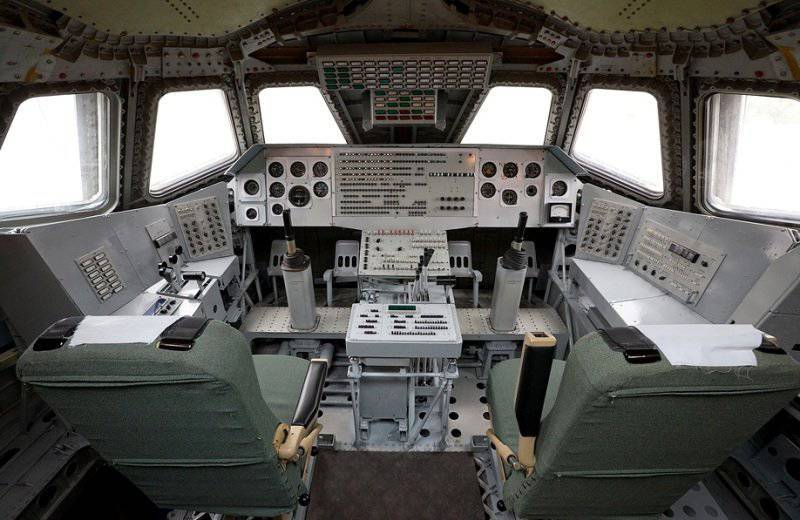
Burana cabin
The main engine installation, two groups of engines for the maneuvering of the engine is located in the end of the tailpiece and in the front part of the housing.
It was planned to build a 5 orbital spacecraft. In addition to the "Buran" was almost ready "The Tempest" and almost half of "Baikal". Two more ships at the initial stage of manufacturing did not receive names. The system "Energy-Buran" was not lucky - she was born at the wrong time for her. The USSR economy was no longer able to finance costly space programs. And some rock pursued astronauts preparing for flights on the "Buran". Test pilots V. Bukreev and A. Lysenko died in plane crashes in the 1977 year, even before moving to the group of cosmonauts. In 1980, test pilot O. Kononenko died. 1988 year took the lives of A.Levchenko and A. Schukin. Already after the flight, “Burana” died in a plane crash R.Stankyavichus - the co-pilot for a manned flight of a winged spacecraft. The first pilot was appointed I. Wolf.
Not lucky and "Buran". After the first and only successful flight, the ship was stored in a hangar at the Baikonur cosmodrome. 12 May 2002 year collapsed overlapping shop in which there were "Buran" and the layout of "Energy". On this sad chord the existence of a winged spacecraft, which gave so much hope, ended.
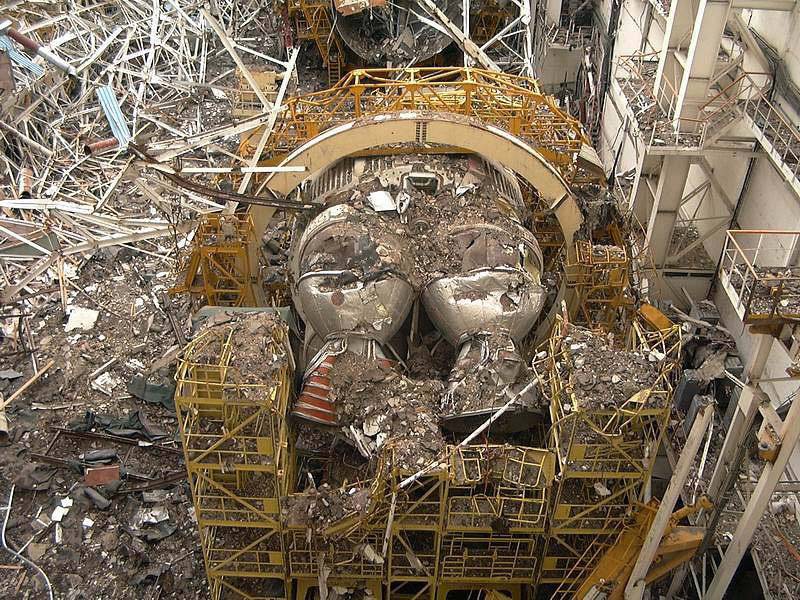
After the collapse of the ceiling
Sources:
http://timemislead.com/kosmonavtika/buran-i-shattl-takie-raznyie-bliznetsyi
http://gunm.ru/news/spejs_shattl_kak_dostizhenie_tekhnicheskoj_mysli_chast_6_poslednjaja/2011-07-21-359
http://www.znanijamira.ru/publ/kosmos/korabli_mnogorazovogo_ispolzovanija_shattl_ssha_i_buran_sssr/39-1-0-1481
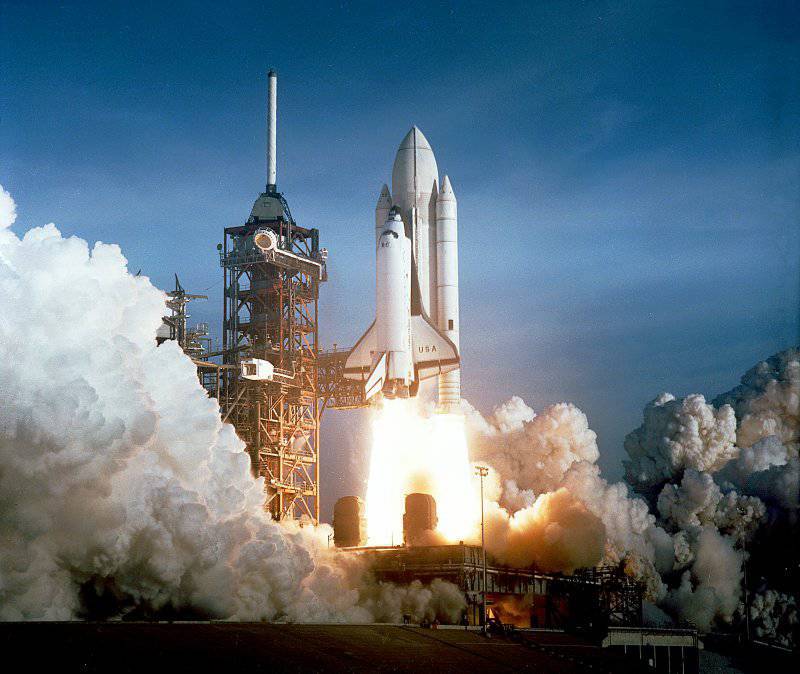
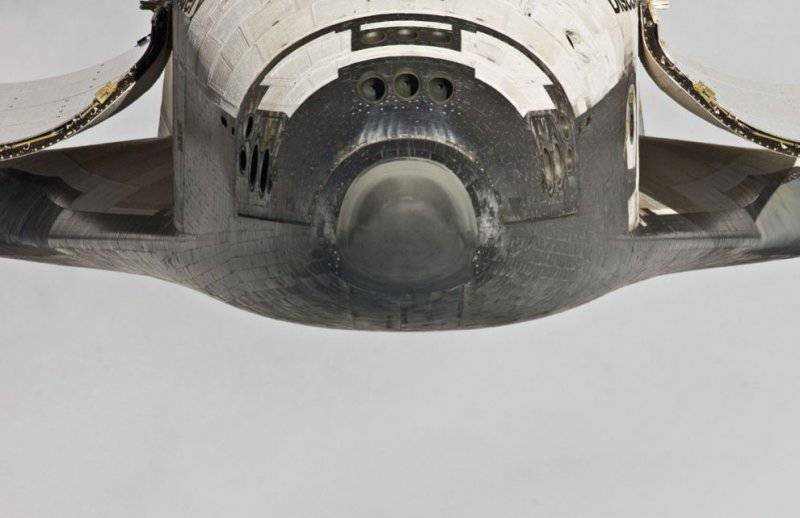
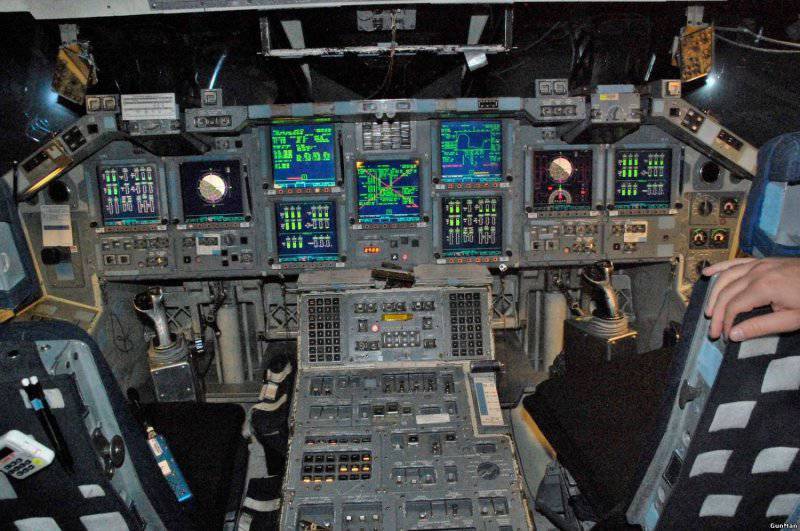
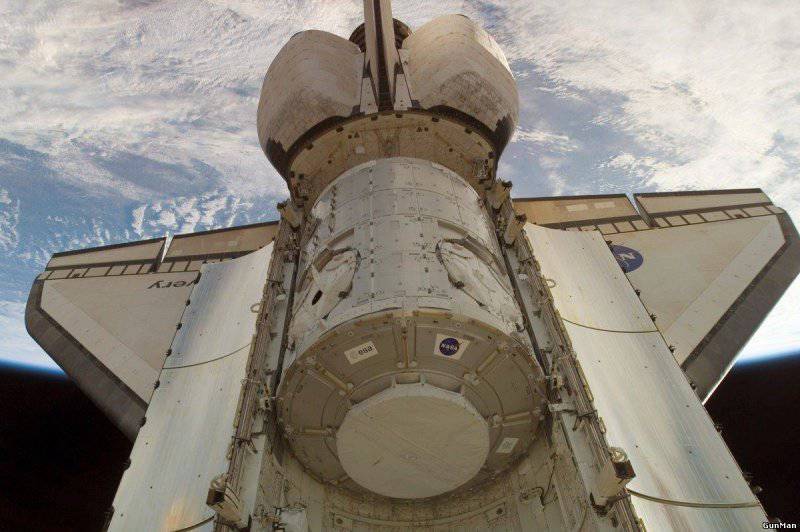
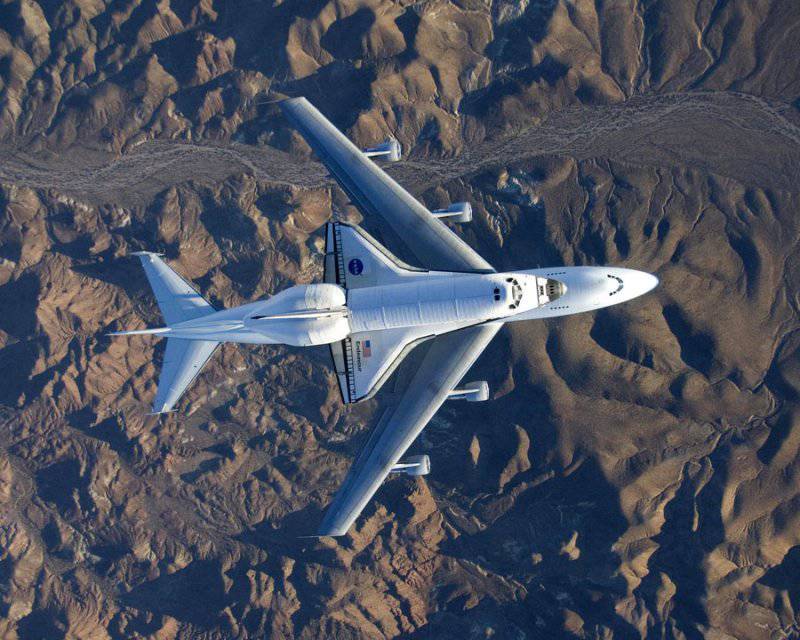
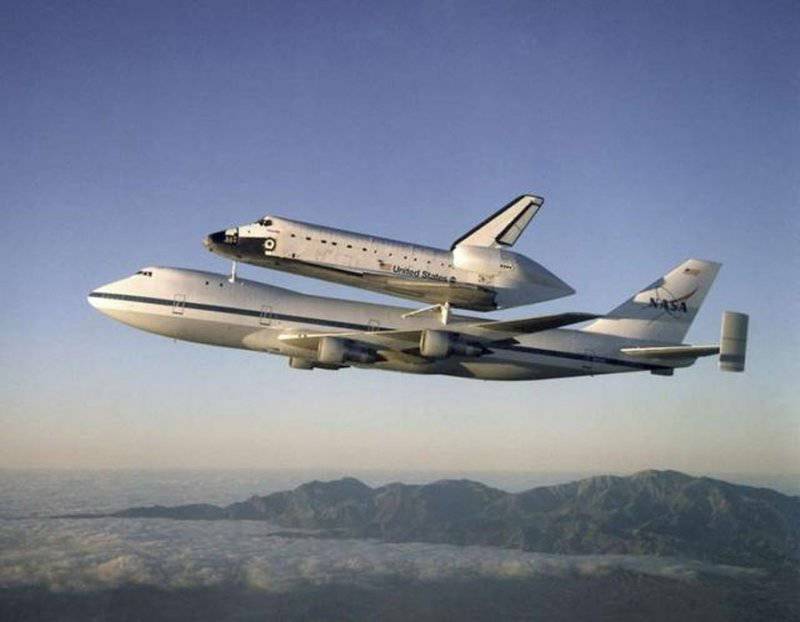
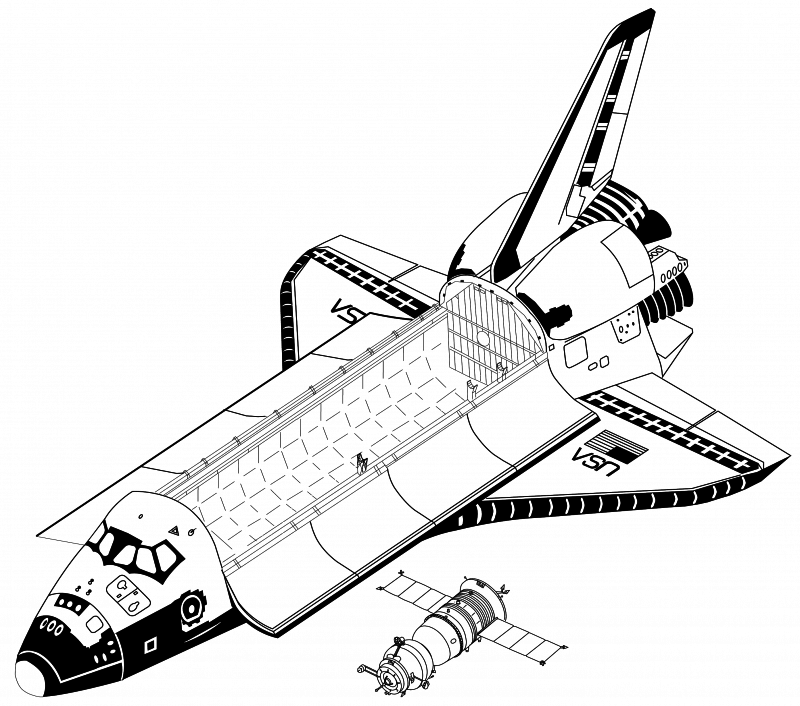
Information